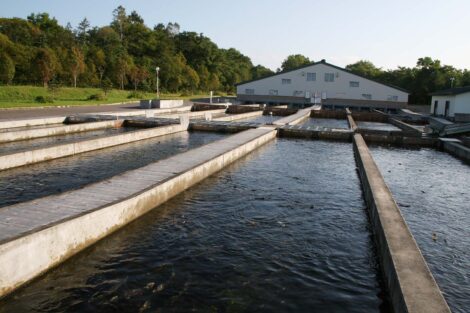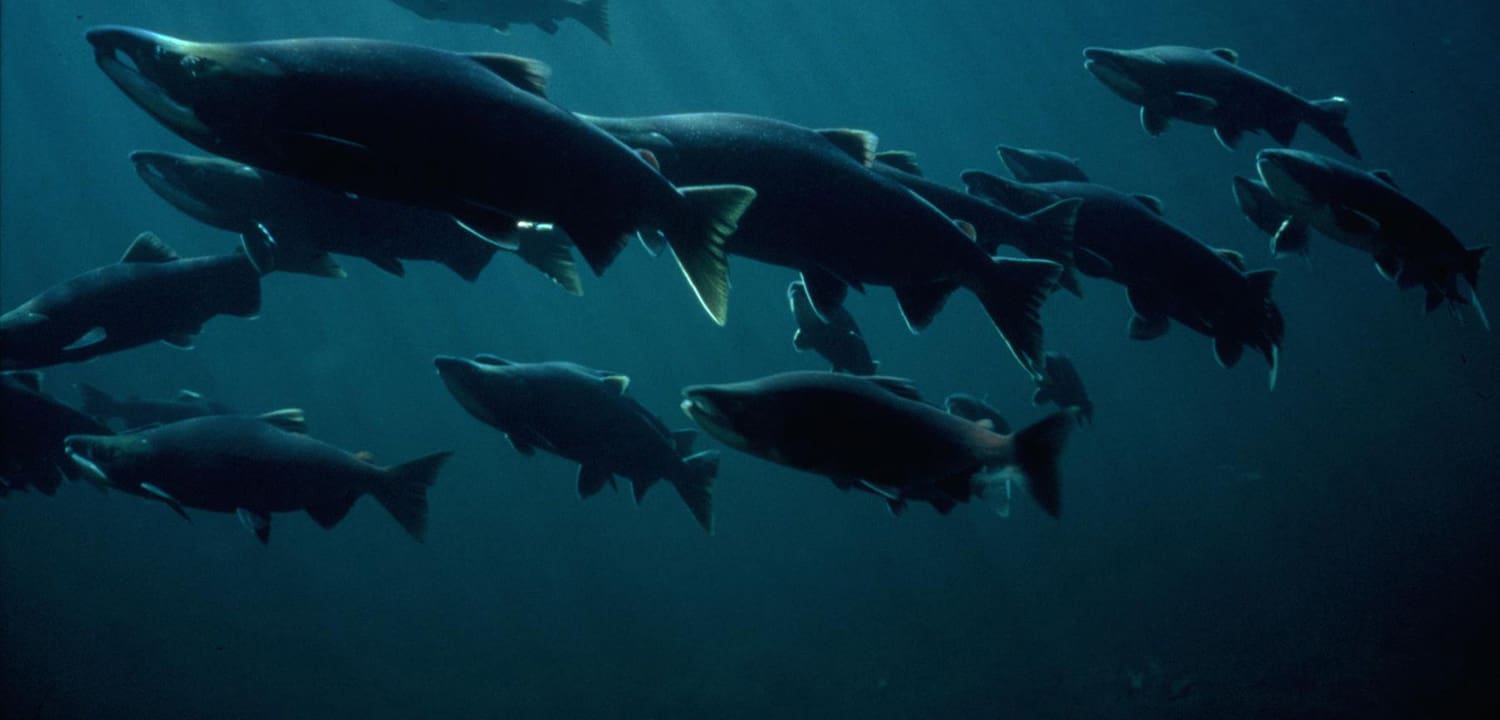New Pacific findings have implications for local and international fisheries management.
Portland, OR – A newly published collection of more than 20 studies by leading university scientists and government fishery researchers in Alaska, British Columbia, Washington, Oregon, California, Russia and Japan provides mounting evidence that salmon raised in man-made hatcheries can harm wild salmon through competition for food and habitat.
“The genetic effects of mixing hatchery fish with wild populations have been well-documented,” says journal editor David Noakes from Oregon State University. “But until now the ecological effects were largely hypothetical. Now we know the problems are real and warrant more attention from fisheries managers.”

The research volume, published in the May issue of Environmental Biology of Fishes, brings together 23 new peer-reviewed studies carried out across the entire range of Pacific salmon, including some of the first studies describing the impact of hatcheries on wild salmon populations in Japan and Russia.
The studies provide new evidence that fast-growing hatchery fish compete with wild fish for food and habitat in the ocean as well as in the rivers where they return to spawn. The research also raises questions about whether the ocean can supply enough food to support future increases in hatchery fish while still sustaining the productivity of wild salmon.
Since the mid-1970s, large increases in hatchery programs in the U.S., Canada, Russia and Japan have released billions of fish into the water. And the increasing global demand for salmon has resulted in calls to further expand hatchery production, especially in Russia and Alaska. In a 2010 open letter to Alaska hatcheries, seafood processors proposed increasing pink salmon hatchery returns by 25%-115% over the next five years. Similarly, Russian hatchery managers stated in 2010 that Russia is planning to build 23 new hatcheries that would increase the country’s hatchery production by 66% or 680 million fish.
Not Just a Local Problem
Scientists are also uncovering surprising interactions on an international scale. One of the new studies indicates that chum salmon (a type of Pacific salmon) released from hatcheries in Asia, mostly from Japan, have played a significant role in causing declines in a wild chum salmon population in remote western Alaska, 2500 miles away.
“Genetic data show that these fish share the same feeding grounds in the open waters of the Bering Sea and North Pacific Ocean,” says author Greg Ruggerone of Natural Resources Consultants. “With billions of hatchery chum released each year, the abundance of adult chum salmon from hatcheries is now much greater than wild chum salmon, so it is not all that surprising that we are seeing evidence of competition in the North Pacific.”
This competition is likely to get tougher with predicted changes in ocean conditions. Recent climate patterns have made ocean conditions temporarily favorable enough to support large populations of salmon, but as these patterns shift, the amount of food in the ocean available for salmon could drop significantly, making it even harder for wild populations to survive.
These results have caused many scientists to point to the need for a new international agreement or treaty to address the expansion of hatchery salmon in the open waters of the North Pacific.
Many industry leaders, academic scientists and government agencies also highlight the importance of more research to understand the full impact of hatchery fish on wild salmon. “Wild salmon represent the backbone of the Alaska salmon fishery,” says Stew Grant of the Alaska Department of Fish and Game, a contributing author to the special issue. “We need more information about the impacts of hatchery salmon entering our wild salmon rivers.”
“There is no substitute for wild salmon. They must be our first priority,” says Guido Rahr, President of the Wild Salmon Center. “Wild salmon are an important part of local culture and a cornerstone of economic health for fishing communities. And once you lose the resilience that wild salmon contribute to our salmon fisheries, it’s almost impossible to bring it back. Given these new findings, we urge fishery managers across the North Pacific to examine the science and err on the side of caution when considering hatchery practices and expansions.”
The titles and abstracts of the papers are available via the Springer Press site, http://www.springerlink.com/content/0378-1909/94/1/ and
Contacts for Additional Information:
Guido Rahr, President and Chief Executive, Wild Salmon Center
503-222-1804, grahr@wildsalmoncenter.org
David Noakes, Professor and Senior Scientist, Oregon State University, USA
541-737-1953 or 541-487-5513, david.noakes@oregonstate.edu
Lev Zhivotovsky, Professor, Institute of General Genetics and Russian Academy of Sciences, Russia
levazh@gmail.com
Greg Ruggerone, Senior Scientist, Natural Resources Consulting, WA, USA
206-285-3480, gruggerone@nrccorp.com
Eric Volk, Chief Scientist, Alaska Department of Fish & Game
907-267-2335, eric.volk@alaska.gov
